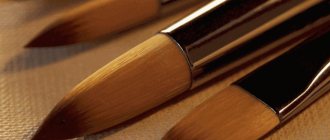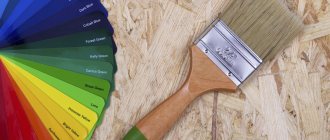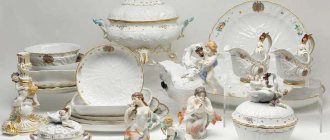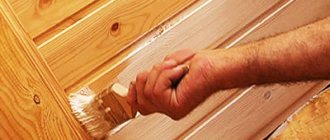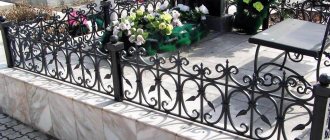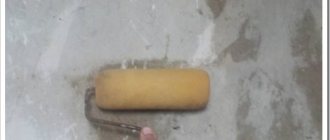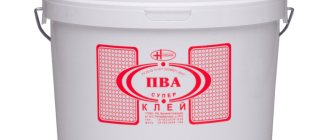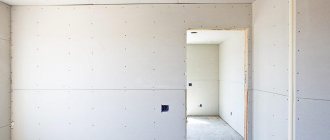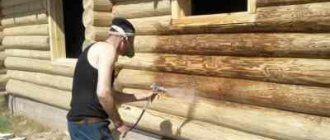What types of brushes are there?
Modern girls' makeup bags can contain a wide variety of brushes: from one to forty or more, if we are talking about a professional makeup artist. Why so much? The point is not only that for some people a couple of basic tools are enough, while others are used to working on their makeup at a more serious level - it’s just that brushes are divided into groups according to various criteria, so it’s sometimes difficult to choose just one it can be difficult.
Application area
First of all, brushes are divided based on the area of use:
- for the skin (working with foundations, powders, blushes, highlighters, bronzers and concealers);
- for eyes (shadow and eyeliner);
- for eyebrows;
- for lips (applying lipsticks, glosses).
Composition of makeup brushes
In addition to the area of responsibility of each brush, it is important to pay attention to its composition: makeup brushes can be natural or artificial. Each material is good in something of its own; they all have their own advantages and disadvantages.
Natural brushes consist of the hair of a variety of animals: these can be hairs from squirrels, goats, horses, martens and measles with softer bristles, as well as pork, badger and buffalo with harder bristles.
The good thing about such tools is that, due to the natural cuticle, the cosmetic product is picked up onto the brush much easier, the pigments are well absorbed into the hairs and blended over the skin. Beginners are recommended to use them, since it is much more difficult to overdo it with applying cosmetics, so they are just right for practice. Natural brushes are especially good for applying powder.
The artificial bristles in brushes consist of synthetic materials such as nylon of varying hardness. They are more dense, they are easier to wash, and products with a liquid texture are not absorbed as strongly as natural ones - this means that less amount of cosmetics will be spent on makeup.
Some brands mark their brushes with colors, making it easier to choose the right tool. For example, beige shades mean working with the base, while brighter shades mean working with the eyes or lips.
Brush shapes
You've probably noticed how different brushes can be: round, fan-shaped, beveled and many others. This parameter influences the choice no less than the others: depending on the area where the cosmetic product is applied, the shape of the brush itself is selected - this is necessary in order to apply makeup as carefully as possible.
The following main types of brushes are distinguished:
- smooth;
- petal-shaped;
- beveled or diagonal;
- bunch-shaped with different lengths;
- fan-shaped;
- barrel-shaped.
It is important to understand that even one area can be treated with different brushes: for example, it is generally accepted that concealer is best applied using a flat brush made of natural materials, but try using a combined tool that contains two types of bristles - this will make the brush fluffy, so shading will be more successful.
Use angled shapes for a more graphic application, as they apply color better, and brushes with rounded outlines are for blush, powder or eye shadow that needs to be carefully blended.
What are bristles made of for clothing and other brushes, cosmetic and painting brushes and combs? Is it suitable for vegetarians and vegans? What kind of bristles are used in hair brushes, shaving brushes, cosmetic brushes, and painting brushes? In everyday life we use a huge number of brushes, combs and brushes: fine-grained and coarse-grained, black and colored, natural and artificial. The origin of the bristles is usually not indicated on such products.
In fact, the bristles of shaving brushes, bristle combs, and brush bristles are often made from animal ingredients, typically pigs, whose bristles remain strong and maintain their properties over the years.
What is stubble?
Bristle is commonly referred to as pig hair. However, the term "stubble" can be used to describe more than just hog bristles. Recently, even whalebone or various substitutes for pig bristles, including its plant species, have been called bristles. Often on brushes and brushes the manufacturer indicates that “natural bristles” were used.
Pig bristles
Industrial livestock farming involves the processing of bristles, cleaning, bleaching and dyeing. Pork bristles of the highest quality are obtained from animals that have reached an age of at least 3-4 years. The bristles are pulled out from the spine and sides of the animal. The best quality is considered to be the bristles that are obtained from the animal's backbone by plucking the hair from a live pig. As a rule, pigs are killed long before they reach 3-4 years of age. This most often occurs around six months of age. Pig bristles are often imported and are highly prized in the market.
Bristle , which is produced by killing and skinning pigs, is by definition non-vegetarian. However, the exact origin of the bristles and the method of extraction are typically not indicated on the final product—brush, comb, or brush.
Vegan Alternatives to Stubble
The zero-waste production of modern animal agriculture and the killing of animals for the production of meat and bristles are forcing vegetarians, and even more so vegans, to look for alternatives to brushes, combs and brushes with natural bristles. For vegetarians, it is best to use artificial bristle or synthetic hair alternatives.
Vegan alternatives to pig bristles are difficult to find and recognize at first glance due to lack of labeling. In this case, only inquiries to the manufacturer can help.
However, brushes and hair combs with artificial, synthetic bristles can be visually distinguished from ordinary natural brushes made from pig bristles. These brushes are usually much softer than natural brushes. Most shaving brushes or beauty brushes nowadays are made with synthetic bristles or synthetic hair.
With this information, you can ask the seller to show you products made without cruelty to animals.
Based on materials from: https://www.vegpool.de
Face brushes
It is a mistake to believe that there should not be many brushes for applying products to the skin of the face - some girls are completely limited to one. It is better if each type of task has its own brush with certain characteristics that will simplify working with the face: a flat synthetic one for tone, a fluffy one for blush and powder. This is a base that you can’t do without, but in reality there can be a lot more face brushes.
Foundation
For professional application of foundation and other corrective products, you can use different types of brushes:
- contour , which looks like a trimmed barrel-shaped brush, is great for drawing wide lines when contouring and sculpting;
- a long flat one , in which the tuft has a rounded shape and an artificial composition - due to this, the foundation is not wasted as much as when using natural bristles. The brush is small, so it is good for working on the area of the eyes and lips;
- spatula brush , which is present in many girls’ cosmetic bags. Its peculiarity is that even the most unruly foundation is “driven” into the skin easily and efficiently.
Concealer
Concealer brushes are similar to those used for foundation, but are smaller in size. A short, flat brush with artificial bristles helps you apply the product precisely and blend it out. It is used to correct problem areas with liquid correctors, which are so difficult to shade due to their dense textures.
Powder
Brushes for shading powder should be chosen exclusively from natural materials - they cope with the task as best as possible. The brush should be moderately wide, so that it is easy to pick up a large amount of product. A brush for powder textures can be of the following types:
- kabuki , which works with compressed media. It looks like a dense ball of natural hair, where each hair is very close to the other;
- fan , which, thanks to its wide fan-shaped shape, easily applies the product and removes excess from the face. The hairs in it are not very close to each other.
Blush
The brush for distributing blush is selected depending on the texture of the product. For dry ones, a tool with natural bristles, slightly smaller in size than a powder brush, is suitable. This size and shape are due to the fact that the product is applied locally - on the apples of the cheeks and cheekbones. To make it more convenient to apply, a beveled edge is added to the brush. If you prefer creamy blush, then you need to choose from artificial brushes that will not take up too much cosmetic product - it’s much more economical, and it’s harder to overdo it.
To contour with blush, use a flat brush with an even cut. She can blend the blush much more carefully, just remember to choose shades in the gray-brown range. With such a brush it is much easier to emphasize the lines: chin, cheekbones, nose.
Paint brushes Dainayw.
Hello everyone, friends, I haven’t written reviews for a long time, I probably had vitamin deficiency). But spring has finally arrived and we need to start waking up. Today there will be a short review about painting brushes. I picked up the brushes spontaneously, I bought markers for a friend in this store, and decided to get some brushes for myself to try. The fact is that sometimes I print figures for myself on a 3D printer and paint them. Of course, I am very far from being a miniature painting master, but this activity calms my nerves very well). The parcel arrived quite quickly, there was nothing interesting in the package, especially since I gave it to the owner with markers. I got a bag of brushes. Since I paint the figures with acrylic, I chose brushes with artificial bristles from the seller, since I painted with natural brushes and from time to time they left lint. The elasticity of synthetic hair makes it an excellent tool for liquid dyes. It is much stronger, although it does not hold paint as well as natural fiber. Also, these brushes are much easier to clean from acrylic paints. As they write on the Internet, synthetic hair brushes are recommended for acrylic-based paints, but are also suitable for working with watercolor, gouache, tempera, and oil.
These are not the cheapest brushes, let’s say they are average lousy, since there are sets of brushes for $20 and $50. But better than the ones I had. First, a general photo.
The brushes are in a transparent blister, mounted on a cardboard. There is a minimum of information in front and behind. In principle, everything is clear. Hair bundles for transportation are covered with plastic covers so that the hairs do not bend, but on some brushes they were put on crookedly and a couple of hairs were bent. There are 9 brushes in total in the set. One is flat, a couple of liners and the rest are round.
The hairs of the brushes are quite elastic, of medium hardness; as I wrote above, they are made of nylon. When wet, they keep their shape, at least for now). The hairs do not fall out and are well secured in the clip. The clip is made of some kind of non-magnetic metal, solid, made of high quality.
The handles of the brushes are wooden, varnished. Each brush is marked with the size and company name. The brushes are of medium length, not for canvas, the average length of the brush is 19.5 cm. The inscriptions are under varnish, so they will not be erased immediately. The length of the hair bundle is from 0.7 cm to 1.65 cm, on a liner.
They fit comfortably in my hand. The brushes have a pointed tip, which allows you to paint small details. True, the hairs are not quite well aligned along the length. Round brushes, depending on the inclination and pressure, allow you to apply paint and draw lines of both constant and variable width in a certain area of width, make wide, thick strokes or, on the contrary, make the finest “hairline” lines with the very tip of the beam. A flat brush is suitable for applying the base and a uniform background. A couple of liners are needed to draw long, even lines, although I don’t use them.
Each brush close-up
I made a short video to show how the brushes work, printed out Darth Maul's head and tried to paint it). In short, don’t throw your slippers too hard, I paint for myself, and the brushes met my expectations, it’s convenient to paint, I also want to get a set of brushes specifically for miniatures. Well, for those who don’t watch the video, a couple of photos. There are no shadows or partial shades, don’t look for them. Then I will try further).Darth Maul
Eye makeup brushes
For eye makeup, use brushes made of artificial fibers. To apply shadows we use a rounded flat shape. These brushes help to better apply the pigment and prepare it for blending. Choose medium-sized, slightly fluffy brushes.
We carry out shading using a round barrel brush - this is the second mandatory tool that is needed for eye makeup. With it, the color will be distributed evenly over the eyelid, and the fold above the upper eyelid can be easily highlighted - this way you can make your look more expressive. In order to add accents to your makeup, you should use an oblique shape.
Eyeliner can also be applied using a special tool. This should be a round, thin brush made of synthetic material that will help create neat, thin arrows using liquid products. Choose brushes of medium and high hardness - this way you can make the lines thin and graphic.
The force of pressure on the brush affects the thickness of the arrows - this also needs to be remembered.
We recommend purchasing several different eyeliner brushes at once - experiment with shapes and hardness to get different eye makeup results.
